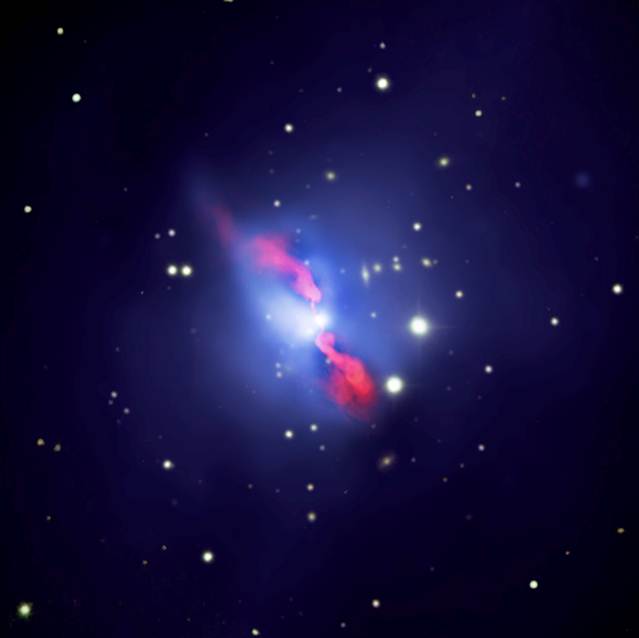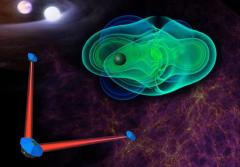Yesterday, the European Space Agency (ESA) selected the research themes for its next two large space missions. The choice for ‘the hot, energetic universe’ (L2) and ‘gravitational waves’ (L3) is good news for Dutch space research. The Netherlands has excellent credentials to make important scientific and technological contributions to these missions.
In the next stage ESA will ask the participating countries to submit proposals for missions that cover the two research themes selected. For ‘the hot, energetic universe’ that must happen before 2014; for ‘gravitational waves’ the deadline is later. The Netherlans is involved in two candidate missions: Athena (L2) and eLISA (L3).
X-ray telescope

The ‘hot and energetic universe’ mission will adress two key questions. How and why does ordinary matter assemble into the galaxies and galactic clusters that we see today, and how do black holes grow and influence their surroundings? Black holes, which lurk unseen at the centres of almost all galaxies, are regarded as one of the keys to understanding galaxy formation and evolution. Astronomers can study this phenomenon with Athena, an extremely powerful X-ray space telescope, with a planned launch date in 2028. “For more than fifteen years SRON has been working on the development of ultra sensitive sensors and read-out electronics that make such a telescope feasible,” says Jan-Willem den Herder (SRON), leader of the project that has to lead to a major Dutch contribution. “Therefore the Netherlands now have good credentials to contribute to the mission.”
The scientific instruments for Athena will be developed and constructed by an international consortium, with an important role for SRON and Dutch astronomers.
Observatory for gravitional waves
eLISA (evolved Laser Interferometer Space Antenna) is the most likely candidate for research into gravitational waves, and it is expected to be launched six years after Athena. The mission will measure the gravitational waves predicted by Einstein from compact binary stars in the Milky Way, from objects swallowed up by black holes and from merging supermassive black holes. “With these revolutionary measurements we can eventually study the formation and evolution of binary stars, the dynamics of stars around black holes and the formation of structures in the universe,” says Gijs Nelemans, from Radboud University Nijmegen/Nikhef and leader of the Dutch eLISA consortium. “The measurements will also throw new light on fundamental physics questions, for example the extent to which Einstein’s theory of relativity applies under extreme conditions. And we might even discover entirely new physics, such as that which must have prevailed shortly after the big bang.”
Before that can happen, extremely advanced technology must be developed for eLISA.For eLISA Radboud University Nijmegen, University of Amsterdam, Leiden University, University of Groningen, VU University Amsterdam and SRON have consolidated their scientific strengths. Nikhef, TNO, NOVA and SRON are doing the same for the technology development for eLISA.In 2015 the LISA Pathfinder mission will first of all be launched.

SRON
SRON Netherlands Institute for Space Research is the Netherlands expertise institute for scientific space research. The institute develops and uses innovative technology for groundbreaking research from space with a focus on astrophysics research, research into the earth’s atmosphere and exoplanetary research. In addition SRON has a research line into ultrasensitive sensors for X-ray and infrared radiation.


